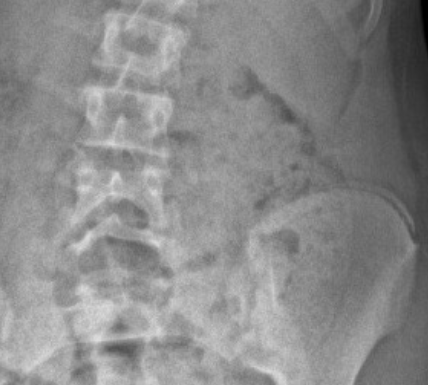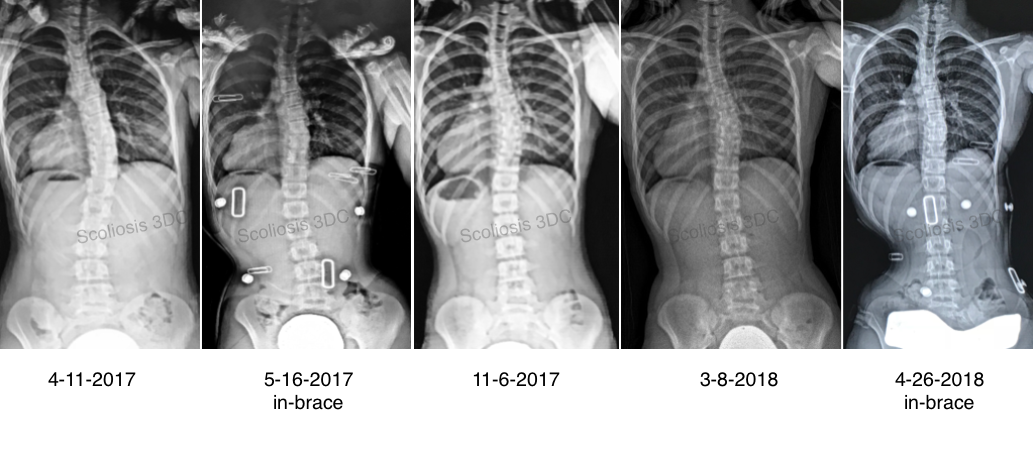
When a child has reached the Risser 2 stage, ossification of the iliac crest apophysis (top of the pelvis) is between 25% and 50% complete. This ossification occurs from lateral to medial (outside to inside, as shown below). Risser 2 means that the child is still growing, but by this point the rate of growth has typically slowed down.
By Risser 2, most girls have experienced menarche, and boys have experienced voice change. Growth continues, although usually not at the rate it has in previous months. That said, the risk of curve progression still exists and there is still a need for curve management.
In this blog, we highlight the case of a young New York girl who began her Schroth and bracing journey with us in April 2017 as a Risser 0. At that time her Cobb angles measured 33º thoracic and 21º lumbar. Her in-brace x-ray taken a month later showed significant improvement in-brace, and a follow-up x-ray (24 hours out-of-brace) in November 2017 revealed Cobb angles of 20° thoracic and 9° lumbar – an excellent reduction!

Once a patient completes the initial brace fitting series, we monitor their growth closely by having parents send photos and measurements at regular intervals to keep track of growth and the fit of the brace.
This young lady had come to the point where she had grown 5 centimeters in height, so we scheduled her to be measured and fit with a second brace in March 2018. Her out-of-brace x-ray, taken on March 8th, indicated she had now advanced to a Risser 2. As a result of her excellent in-brace correction and compliance to her first brace, her spine maintained the previous reduction (Cobb angle measurements 22º and 11º).
A new in-brace x-ray, taken 4/26/2018, with her new brace on reveals in-brace Cobb angles of 10º thoracic and 5º lumbar. With continued compliance to brace-wear and her home exercise program, we expect that her out-of-brace curve will remain stable and hopefully continue to improve a bit until she reaches skeletal maturity! This case demonstrates how we actively manage the growth process in growing adolescents, always striving for the best possible outcome.

